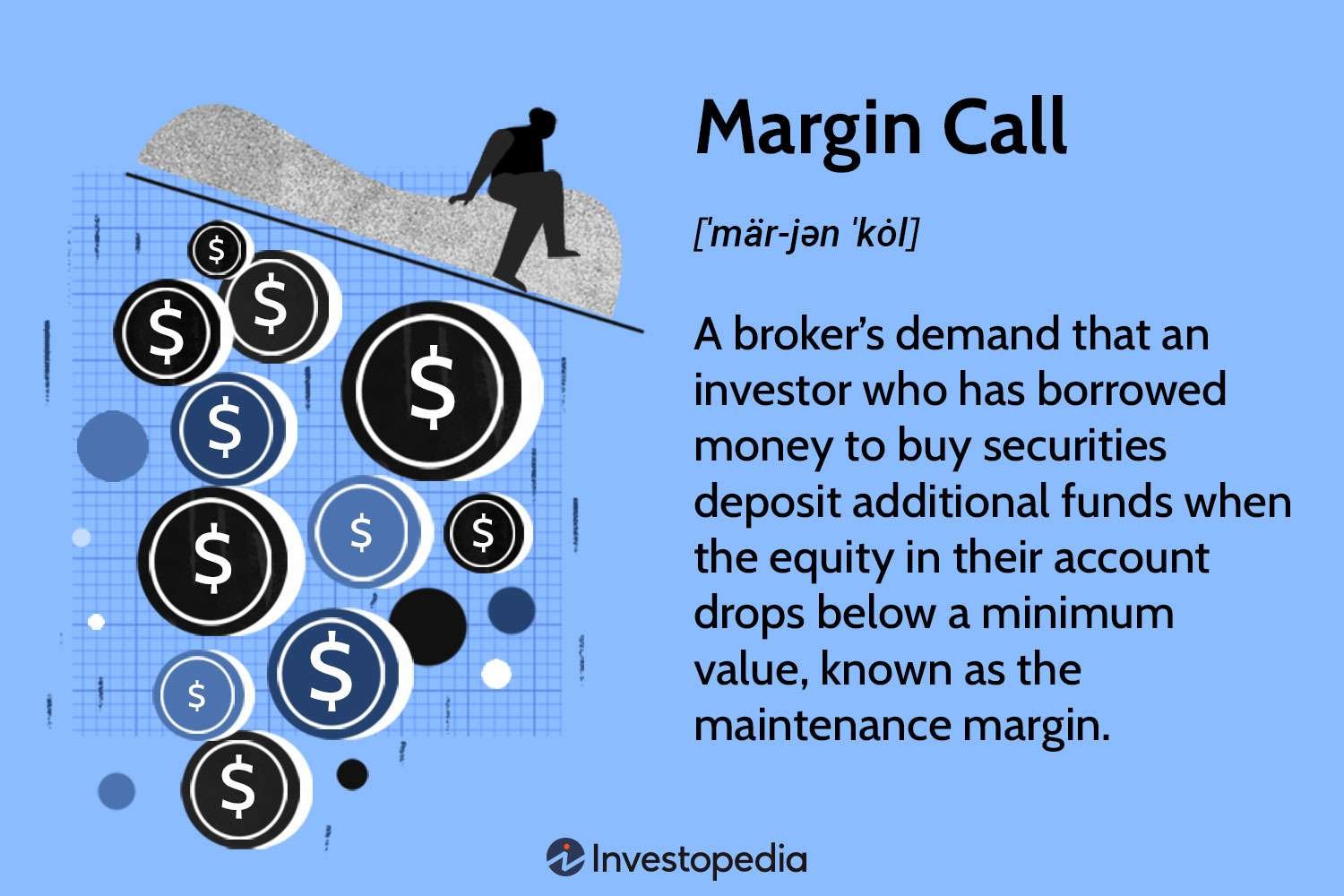A margin call in stock trading can be a nerve-wracking experience for any investor. It occurs when the value of your brokerage account falls below a certain level, leading the broker to demand more money to cover potential losses. This can feel like a financial tightrope, where a wrong move could lead to significant consequences. Understanding what a margin call entails is crucial for navigating the world of stock trading and safeguarding your investments. So, let’s dive into the details and demystify what is a margin call in stock trading.
What is a Margin Call in Stock Trading?
Understanding Margin Trading
Before diving into the intricacies of a margin call in stock trading, let’s first understand the concept of margin trading. In simple terms, margin trading allows investors to borrow funds from a brokerage firm or bank to increase their buying power in the stock market. It enables traders to potentially amplify their gains by using leverage.
When trading on margin, investors are required to deposit a certain percentage of the total trade value, known as the initial margin. The remaining amount is provided as a loan by the brokerage firm, allowing traders to control a larger investment with a smaller upfront capital requirement.
Exploring Margin Call
While margin trading offers the potential for higher returns, it also comes with increased risks. One crucial risk factor to consider is the possibility of a margin call. A margin call occurs when the value of the securities held in a margin account falls below a certain threshold specified by the brokerage firm. This threshold is known as the maintenance margin.
When a margin call is triggered, the brokerage firm requests the trader to deposit additional funds into their margin account to restore the account’s equity balance. The required deposit is calculated based on the specific rules set by the brokerage firm and the regulatory authorities.
Calculating the Margin Call
To understand how a margin call is calculated, it’s essential to familiarize yourself with the concepts of margin, equity, and margin level.
– Margin: The initial deposit made by the trader when opening a margin account.
– Equity: The total value of the account, including both cash and securities.
– Margin Level: Calculated by dividing equity by the total margin, then multiplying by 100 to express it in percentage.
The margin call is triggered when the margin level falls below a certain predetermined percentage, typically around 25% or 30%.
To calculate the margin level, you can use the following formula:
Margin Level = (Equity / Total Margin) x 100
For example, if you have $10,000 in equity and $40,000 in total margin, your margin level would be:
Margin Level = ($10,000 / $40,000) x 100 = 25%
If the margin level dips below the specified threshold, a margin call will be initiated.
Impact of a Margin Call
Once a margin call is triggered, the trader is required to act swiftly to meet the brokerage firm’s demands. Failing to do so may result in the liquidation of the trader’s positions, without their consent, to cover the margin shortfall.
There are several consequences of a margin call:
1. Additional Funds Requirement: The trader must deposit additional funds into their margin account to meet the margin requirements. This can pose a financial burden, especially if the trader is not prepared for such a situation.
2. Forced Liquidation: If the trader fails to deposit the required funds within the specified time frame, the brokerage firm may take action to protect its interests by liquidating the trader’s positions. The securities are sold to cover the margin deficit, potentially resulting in significant losses if the market value of the securities has declined.
3. Loss of Control: When a margin call is triggered, the trader loses control over the timing and pricing of the liquidation. The brokerage firm may execute the trades at unfavorable prices, further exacerbating the losses incurred.
4. Negative Impact on Credit Score: If the trader is unable to fulfill the margin call requirements, it may lead to defaults or late payments. This can have a detrimental effect on their credit score, making it challenging to access credit in the future.
Preventing Margin Calls
While margin calls can be stressful and financially demanding, there are measures traders can take to reduce the likelihood of facing a margin call:
Maintain a Healthy Margin Level
To avoid margin calls, it’s crucial to maintain a healthy margin level above the specified threshold. By keeping the margin level comfortably above the minimum requirement, traders create a buffer that can withstand temporary market fluctuations.
Proper Risk Management
Implementing robust risk management strategies is vital in minimizing the chances of a margin call. Some effective risk management techniques include:
– Setting Stop-Loss Orders: Placing stop-loss orders ensures that positions are automatically closed when the market moves against the trader beyond a predetermined level.
– Diversification: Spreading investments across different asset classes and sectors helps mitigate the impact of potential losses on a single trade or sector.
– Regular Monitoring: Monitoring positions regularly allows traders to identify potential risks and take appropriate actions before they escalate.
Understanding Margin Requirements
Each brokerage firm sets its own margin requirements, so it’s essential to thoroughly understand these requirements before engaging in margin trading. By familiarizing yourself with the specific rules and regulations, you can make informed decisions and be better prepared to manage your margin account effectively.
Understanding margin calls is crucial for anyone involved in margin trading. By comprehending the concept and potential consequences, traders can effectively navigate the risks associated with using leverage. Remember, maintaining a healthy margin level and implementing proper risk management techniques are key to minimizing the likelihood of a margin call. Always be proactive in monitoring your margin account, as it allows you to take timely action and potentially avoid unfavorable outcomes.
What is Margin | Margin Call Explained
Frequently Asked Questions
Frequently Asked Questions (FAQs)
What is a margin call in stock trading?
A margin call is a demand from your broker to deposit additional funds into your trading account when the value of your investment falls below a certain threshold. It occurs when the equity in your account, which is the value of your position minus borrowed funds, drops below the required maintenance margin.
How does a margin call work?
When the equity in your account falls below the maintenance margin, your broker will issue a margin call. You will be required to deposit additional funds or sell some of your securities to increase the equity to an acceptable level. If you fail to meet the margin call, the broker may liquidate your positions to cover the losses.
What happens if I receive a margin call?
If you receive a margin call, it is crucial to respond promptly. Failing to meet the margin call can lead to the liquidation of your positions, resulting in potential losses. It is advisable to have a plan in place to manage margin calls, such as setting stop-loss orders or having sufficient funds in your account.
What causes a margin call?
A margin call can be triggered by a decline in the value of the securities held in your account. It may occur due to market volatility, a significant price drop in a specific stock, or excessive borrowing against your positions. Margin calls can also result from violating specific margin requirements set by your broker.
Can I avoid margin calls?
While it is not possible to entirely avoid margin calls when trading on margin, there are steps you can take to minimize the risk. These include closely monitoring your positions, maintaining sufficient funds in your account, setting realistic stop-loss orders, and diversifying your investment portfolio.
What are the risks of margin trading?
Margin trading involves additional risks compared to trading with only your own funds. The use of borrowed money amplifies both potential gains and losses. If the market moves against your positions, the losses can exceed your original investment. It is essential to carefully assess your risk tolerance and be aware of the potential consequences.
How does margin trading differ from cash trading?
In cash trading, you buy and sell securities using only the funds available in your account. However, margin trading allows you to borrow funds from your broker to increase your buying power. This amplifies your potential profits or losses, as you are trading with borrowed money.
What are the margin requirements for stock trading?
Margin requirements vary among brokers and financial instruments. Generally, brokers set initial margin requirements, indicating the percentage of the total purchase price you must provide. Maintenance margin requirements specify the minimum amount of equity you need to maintain in your account after the initial purchase. It is essential to understand the margin requirements of your broker before engaging in margin trading.
Final Thoughts
A margin call in stock trading occurs when an investor’s margin account falls below a certain threshold. This triggers the brokerage firm to request additional funds or securities to cover the shortfall. If the investor fails to meet the margin requirements, the brokerage firm may sell off the investor’s securities to cover the debt. Margin calls act as a safeguard for brokerage firms and help mitigate potential losses. Understanding what is a margin call in stock trading is essential for investors to manage their risk and ensure compliance with the margin requirements set by their brokerage firm.


